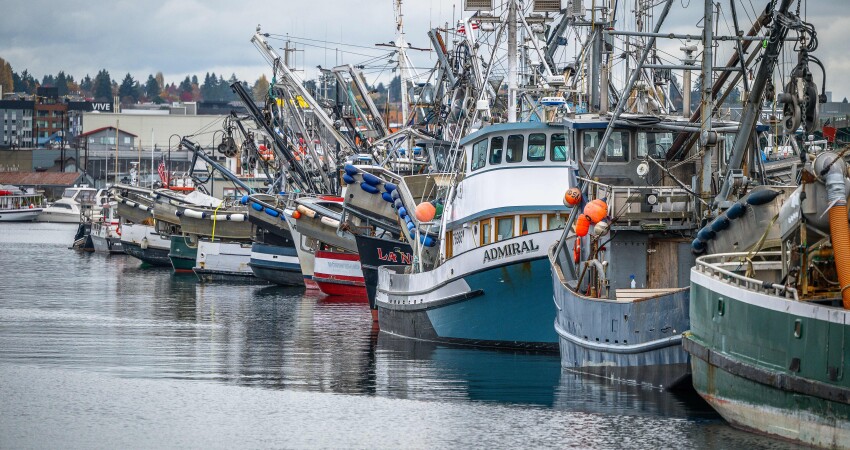Recent discussions among fishermen on the docks have prominently featured Direct-To-Consumer (DTC) marketing. Propelled by the idea that there's more profit in the margins that could go directly into their pockets, some have experienced success, while others have found it more challenging than rewarding. The successful group will attest that while the profit margins are alluring, they face numerous challenges as they learn to wear multiple hats beyond fishing. But not all direct-to-consumer marketing stories are successful ones.
Is selling direct truly a financial solution for fishermen, or does it entail more hassle than it’s worth? The answer: it depends. In this article, we’ll attempt to shed some light on the realities of direct to consumer marketing. At the end of this piece, we’ve also included a handy checklist to help you determine if direct to consumer marketing is for you. But first, let’s start by diving into what exactly direct-to-consumer seafood marketing is.
DTC marketing is a business strategy involving the direct sale of products to consumers, bypassing traditional intermediaries like processors, wholesalers, and retailers. It’s as straightforward (yet secretly challenging) as the name suggests. Seafood harvesters sell and communicate directly with consumers about products and, hopefully, build a loyal customer base. Besides profit, the case for DTC marketing lies in its potential to create a more direct and personalized connection between fishermen and consumers. By establishing a direct line to customers, fishermen can showcase the quality of their catch, narrate the stories of their trade, and build a brand that resonates with environmentally conscious and locally supportive consumers.
Directly communicating sustainable practices to the end consumer can ease concerns about overfishing and environmental impact. Hearing it straight from the horse's, excuse us, “fish’s” mouth can offer transparency and traceability that you just can’t get at your local retailer. The same can be said for the ever growing need for storytelling. Standing directly in front of the consumer at a farmers market, conveying the commitment to responsible fishing practices, will ultimately foster trust and loyalty among environmentally conscious consumers.
DTC marketing also allows fishermen to control their pricing and margins, providing insulation from the price volatility that consistently rocks the industry. The reason profit margins are the least important lies in the name of the business practice itself. If you don’t love being connected directly with your consumers or if the idea of marketing yourself seems daunting, then this path probably isn’t for you. While going direct-to-consumer allows for setting fair prices for your hard-earned catch, it comes with a whole host of new business skills necessary for finding success.
First and foremost is addressing the complexities of logistics, packaging, and shipping. The investment in e-commerce infrastructure and the expertise to navigate the digital landscape can be a big hill to climb, especially for those more accustomed to the sea than the World Wide Web and the ever-evolving landscape of social media.
Next, building a brand and reaching consumers in a crowded online marketplace demands a strategic and sustained effort. Establishing an online presence, managing social media channels, and implementing effective digital marketing campaigns requires time and resources. Balancing the demands of fishing and the digital marketplace may pose a challenge.
In truly examining the skills required to sustain a direct-to-consumer marketing business, it becomes evident that DTC marketing is not a one-size-fits-all opportunity. It's a strategic decision that necessitates careful consideration of the unique challenges and opportunities within each fishing community and small business. Direct marketers have to love marketing and customer service. If wearing either of those hats seems intimidating, then it may be more of a challenge than it’s worth.
For those with a knack for marketing and a true desire to build a brand, the DTC model has its perks. The changing consumer landscape has created a space for anyone who wishes to tell their story, and seafood fans are ready to hear it.
Checklist:
This checklist is designed to help you understand the unique skill sets needed to successfully sustain a DTC business. You or a partner should be able to check most of the boxes before embarking on your DTC journey.
If most of the boxes are left unchecked then DTC marketing may not be the right fit for you.
Check the box if your answer is yes, leave it unchecked if your answer is no.
● Enjoys creating content for Social Media
● Has access to brand and logo development
● Knows how to build and maintain a website
● Understands shipping logistics for fresh/frozen products
● Has access to processed products or access to a facility to self-process
● Has extra time to package and ship
● Willing to spend weekends at farmers markets
● Willing to speak about products directly to consumers
● Can handle customer communications/complaints (there will be complaints)
● Has or is willing to build relationships with restaurateurs and chefs
● Willing to deliver products locally
● Understands how to use a POS system (Point of Sale)
This list is just a preview of the added responsibilities of going to DTC and all of these items have a commitment of time and resources. Selling DTC is not as straightforward as just selling your fish. It requires consistency and the same passion you have for being on the water. Be thoughtful and honest about your answers so you have the best chance of being successful.







